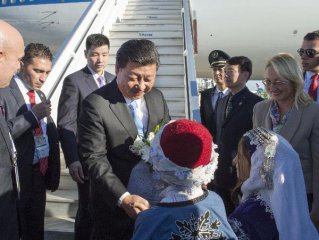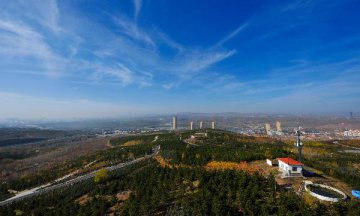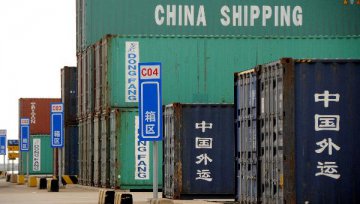
China has mapped out the outline of a new round of opening-up focusing on the service industry.
Dividend: new round of opening-up gives priority to service industry
At the “global service trade summit” hosted by China Beijing International Fair for Trade in Services (Beijing Fair) on May 28, Minister of the Commerce Gao Hucheng said that China will speed up implementing the development strategy driven by innovation, and give priority to the service industry, to advance a new round of high-level opening-up.
Right on the previous day, initiative of innovative development pilot works on service trade was held in Beijing. Representatives from the Ministry of Commerce (MFCOM), the PBOC, the General Administration of Customs (GAC), the State Administration of Taxation (SAT) and the Ministry of Finance (MOF) gave speeches on measures supporting the innovative development pilots of service trade. The joint members of the meeting had deliberated the implementing plans of 15 pilot areas. The meeting emphasized “promote positive interaction between top-level design and grass-level exploration through carrying out pilot works on innovation pilot works of service trade, to find the right path for the development of service trade of the whole nation.”
The journalist also learnt that the MOFCOM is expediting the preparation of The 13th Five-Year International Service Trade Development Plan and The 13th Five-Year International Service Outsourcing Industry Development Plan. “Expand the scale, optimize the structure, improve the impetus, strengthen the foundation and promote balance” will become the main directions of the development of service trade during the 13th Five-Year period. A basket of new policies were also under development.
Scale: to hit trillion dollars by 2020
“The progress of free global trade with emphasis on service trade has obviously speeded up. China’s economic transformation and upgrading become increasingly dependent on two-way opening of service trade and the service market,” said Chi Fulin, head of the reform and development institute of Hainan Province, said in a previous interview with the Economic Information Daily. During the 13th Five-Year period, China’s further opening-up has combined with free global trade. It requires China to transform from the primary opening-up focusing on the industrial market to the secondary opening-up emphasizing service industry.
Data from the MOFCOM shows that during the 12th Five-Year period, China’s import and export of services realized annual average growth of 14.5 percent, two times that of the world’s average. In 2015, the turnover of China’s service trade ranked the second worldwide.
It is worth noting that under the background that when global trade weakened and economy faced with huge pressure, in comparison with the negative growth of cargo trade, China’s service trade maintained rapid growth, with the total volume of import and export reached 713 billion dollars, up 14.6 percent year on year, and its proportion in the foreign trade increased to 15.4 percent, up 3.1 percentage points. Its role as the new impetus of economic development is noticeable.
The importance of service trade is not only reflected by its rapid development and its role of leading the transformation of China from a big trade nation to a trade power. In the eyes of Qiu Lixin, head of the service trade and business service division, service trade is also important means for the improvement of quality and efficiency of the service industry, a major channel to solve college graduates’ employment, and a key approach to improve China’s soft power.
In general, while favorable policies continue to release, service trade has many other advantages. Qiu pointed out that in domestic market, the strategic position of service trade becomes increasingly prominent under the new normal. The service industry plays an important role in driving the GDP growth and expanding investment, consumption and employment; the environment for the development of the service industry also optimized; China’s economic structure adjustment deepened, supply-side structural reform accelerated, and production factors are transferring to the service industry and service trade at faster speed; developing new and open economic mechanism, building world trade power and accelerating the construction of the “Belt and Road” has provided new opportunities for the development of service trade.
In this regard, the MOFCOM estimated that during the 13th Five-Year period, China’s service trade will enter a gold era embracing development in an all-round way. By 2020, China’s import and export is expected to realize turnover of over 1 trillion dollars, and bring huge business opportunities to service enterprises around the globe.
Approach: innovation leads development of service trade
It is learnt that the fourth Beijing Fair covered key service trade segments such as finance, health care, education, sport and communication. News on May 29 came that 24,096 merchants from 126 countries and regions had participated in the fourth Beijing Fair. On the first day of the opening, the number of registered merchants hit record high, with 2,810 merchants registered on site, and the total number of participants reached 36,734. It can be seen from the Beijing Fair that countries around the world, not only limited to China, pay great attention to the development of the service industry and service trade.
At the same time, global service trade develops very quickly. In particular, as information technologies such as big data, Internet of things, cloud computing and mobile Internet booms, the tradability of services enhanced, and the model innovation of the service trade area accelerates. The impetus of innovation is also regarded by countries around the globe as the major path for the development of service trade in the future.
“The proportion of service economy in global value chain is increasing, and its growth is dependent on the expansion of global value chain and investment of knowledge capital. The service industry is made more important with digitalization and the development of technology, and it becomes an integral part of the global value chain with the strongest innovation and tradability. 50 percent of the value-added exports of the members of the OECD derive from service trade; in China, 30 percent of the growth in export is services. Meanwhile, innovation is also reshaping the traditional service industry,” said Mari Kiviniemi, deputy secretary general of the OECD.
“To build china into a trade power from a big trade nation, innovative development is an indispensible part,” said Xing Houyuan, deputy head of the research institute of the MOFCOM. “Setting up innovative development pilots for service trade is a very good measure. In the next stage, we should make innovation on system and mechanism, improve the management system of service trade, and build a mechanism platform and policy platform favorable to expanding two-way opening of the service industry. This could encourage competitive service enterprises to innovate development model of service trade, such as the development of Internet Plus and offshore service outsourcing.”
Translated by Adam Zhang
























Latest comments